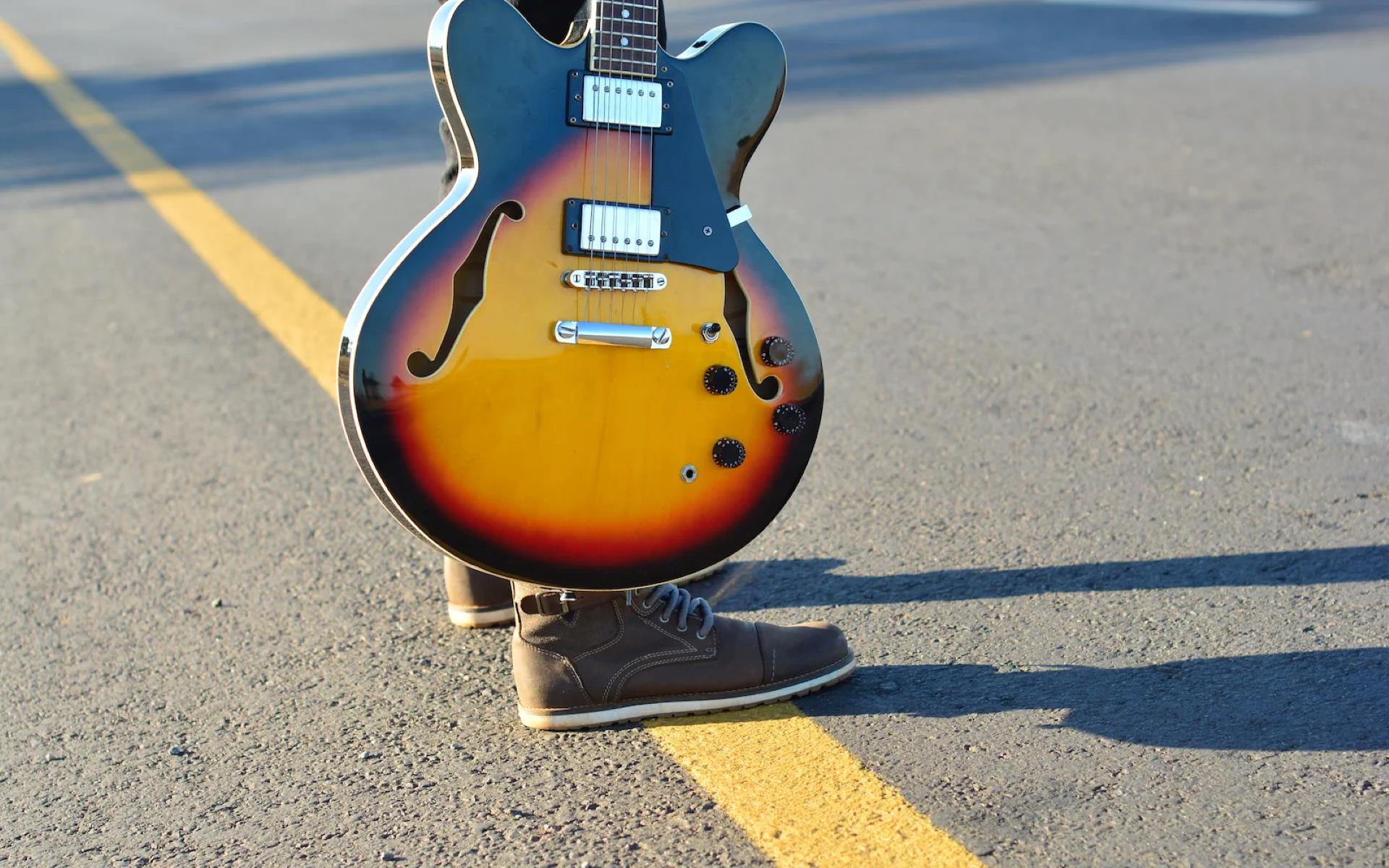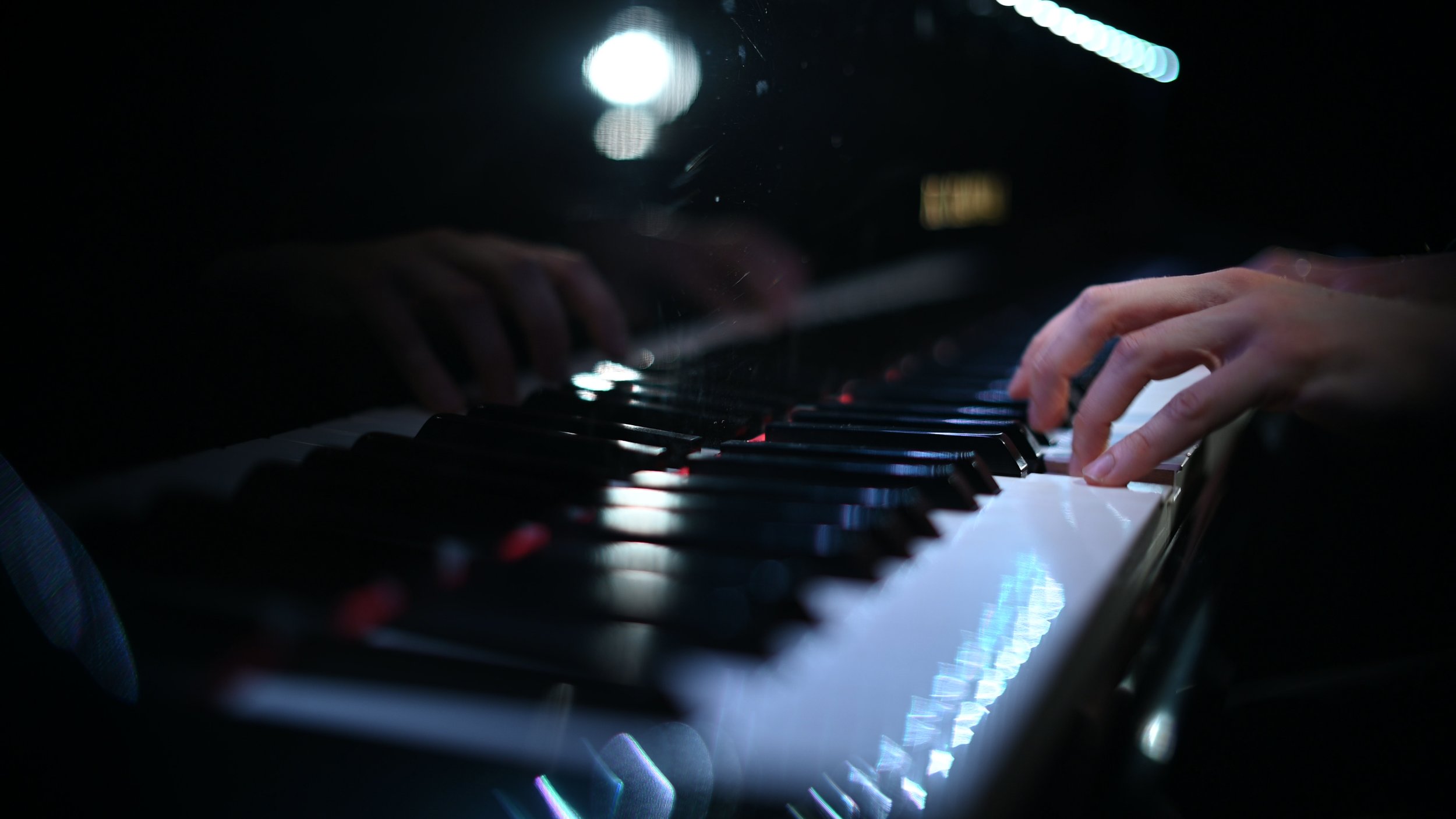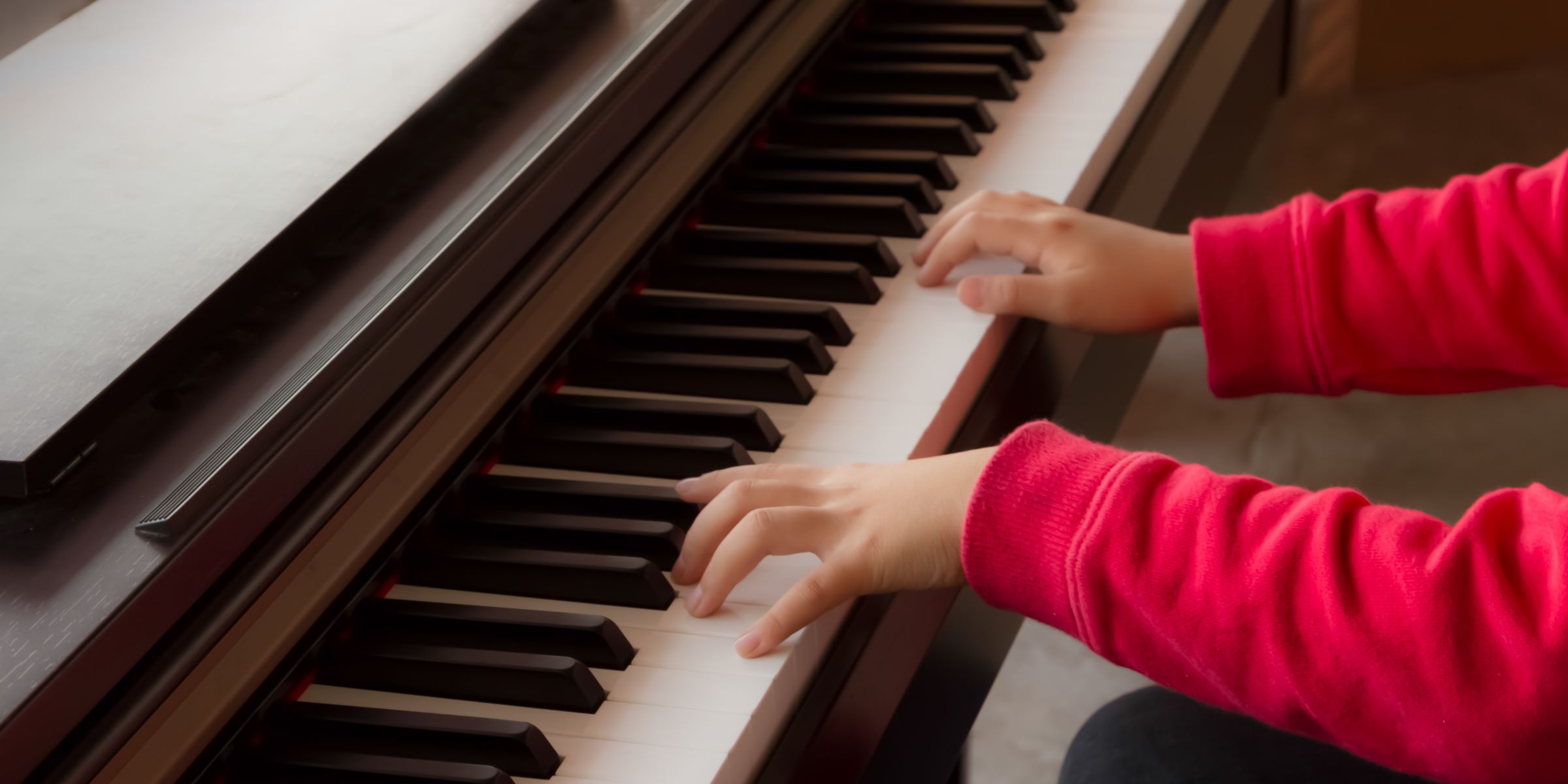Home>Instruments>Piano>Learn How To Play Jazz On Piano


Piano
Learn How To Play Jazz On Piano
Published: February 11, 2024
Discover the art of playing jazz on the piano with our comprehensive guide. Learn essential techniques and improve your skills to master the piano. Unlock the secrets of jazz piano today!
(Many of the links in this article redirect to a specific reviewed product. Your purchase of these products through affiliate links helps to generate commission for AudioLover.com, at no extra cost. Learn more)
Table of Contents
Introduction
Introduction
Welcome to the fascinating world of jazz piano! Learning to play jazz on the piano is an enriching journey that combines technical skill with creative expression. Whether you're a beginner pianist or have experience with other musical genres, delving into jazz offers a unique and rewarding experience.
Jazz music is renowned for its improvisational nature, rich harmonies, and syncopated rhythms. As a pianist, immersing yourself in this genre opens the door to endless possibilities for self-expression and musical exploration. In this guide, we'll explore the fundamental techniques, scales, chords, and improvisational skills essential for mastering jazz piano.
Throughout this article, we'll delve into the intricacies of jazz piano, providing valuable insights and practical tips to help you embark on this captivating musical journey. From understanding the essence of jazz music to mastering improvisation and playing classic jazz standards, you'll gain a comprehensive understanding of what it takes to play jazz on the piano. So, let's dive into the enchanting realm of jazz piano and uncover the secrets to creating captivating melodies, harmonies, and rhythms.
Understanding Jazz Music
Understanding Jazz Music
Before delving into the techniques of playing jazz on the piano, it’s essential to grasp the essence of jazz music itself. Jazz is a genre that originated in the late 19th and early 20th centuries in the United States, characterized by its improvisational nature, complex harmony, and syncopated rhythms. At its core, jazz is about freedom of expression, individuality, and spontaneous creativity.
One of the defining features of jazz is its emphasis on improvisation. Unlike classical music, where the notes are precisely notated, jazz musicians often create music on the spot, drawing from their knowledge of scales, chords, and musical intuition. This element of improvisation infuses jazz with a sense of spontaneity and excitement, making each performance unique and dynamic.
Harmony plays a crucial role in jazz music. Jazz musicians frequently use extended chords, such as seventh, ninth, eleventh, and thirteenth chords, to create rich and colorful harmonic progressions. This harmonic complexity allows for expressive and nuanced playing, providing ample opportunities for pianists to explore various voicings and chord inversions.
Rhythm is another hallmark of jazz music. Syncopation, swing rhythms, and polyrhythms are prevalent in jazz, adding a layer of rhythmic sophistication to the music. As a pianist, mastering rhythmic precision and understanding the intricacies of swing feel are vital for capturing the authentic jazz sound.
Additionally, jazz often incorporates elements of blues, gospel, and other musical traditions, contributing to its diverse and eclectic nature. Understanding the historical and cultural contexts in which jazz emerged can provide valuable insights into the roots of this influential musical genre.
By immersing yourself in the nuances of jazz music, you’ll develop a deeper appreciation for its expressive power and artistic depth. This understanding will serve as a solid foundation as you embark on your journey to master jazz piano.
Basic Piano Techniques
Basic Piano Techniques
As you venture into the world of jazz piano, mastering fundamental piano techniques is essential for building a strong musical foundation. These techniques form the basis for expressing the rhythmic and harmonic complexities inherent in jazz music. Whether you’re new to the piano or transitioning from a different musical genre, honing these skills will set the stage for your jazz piano journey.
Finger Independence: Developing finger independence is crucial for executing intricate jazz piano passages. Practice exercises that focus on individual finger strength and dexterity, allowing your fingers to move independently and swiftly across the keys.
Chord Voicings: Jazz piano often involves voicing chords in a way that creates rich and colorful harmonic textures. Experiment with different chord voicings, including rootless voicings and extended chords, to expand your harmonic palette and add depth to your playing.
Improvisational Tools: Familiarize yourself with scales, arpeggios, and patterns that serve as the building blocks of jazz improvisation. Practice scales such as the major, melodic minor, and harmonic minor scales, as well as their respective modes, to develop fluency and agility in improvising over chord progressions.
Rhythmic Precision: Jazz piano requires a strong sense of rhythmic precision. Work on developing a solid sense of time and mastering syncopated rhythms, swing feel, and polyrhythms. Practice with a metronome to internalize different rhythmic patterns and refine your timing.
Articulation and Dynamics: Pay attention to articulation and dynamics to infuse expressiveness into your playing. Experiment with different touch and articulation techniques, such as staccato, legato, and accents, to convey emotion and musicality in your performance.
By diligently honing these basic piano techniques, you’ll lay the groundwork for navigating the complexities of jazz piano with confidence and artistry. These skills will serve as the building blocks for embracing the stylistic nuances and improvisational freedom that define jazz piano playing.
Jazz Piano Scales and Chords
Jazz Piano Scales and Chords
Understanding and mastering jazz piano scales and chords are fundamental to unlocking the expressive potential of the genre. Jazz music is characterized by its rich harmonic language and melodic improvisation, making scales and chords pivotal components of a pianist’s toolkit. By delving into the following essential scales and chords, you’ll expand your harmonic vocabulary and melodic fluency in the context of jazz piano playing.
Jazz Scales: In jazz, scales serve as the raw material for improvisation and melodic expression. While traditional major and minor scales are foundational, jazz musicians often explore modal scales, such as the Dorian, Mixolydian, and Lydian modes, to infuse their improvisations with distinct tonal colors and emotions.
Blues Scale: The blues scale is a cornerstone of jazz and blues piano playing. It adds a soulful and expressive quality to improvisations, allowing pianists to evoke the emotive essence of blues music within a jazz context. The blues scale incorporates blue notes, such as the flattened third and flattened fifth, creating a distinct bluesy sound.
Jazz Chords: Jazz piano chords extend beyond traditional triads, encompassing a rich tapestry of extended and altered chords. Seventh chords, ninth chords, eleventh chords, and thirteenth chords are prevalent in jazz harmony, providing pianists with a broad palette of harmonic colors to embellish their playing.
Voicings and Inversions: Experimenting with different chord voicings and inversions is integral to jazz piano playing. Rootless voicings, drop voicings, and spread voicings offer diverse ways to voice chords across the keyboard, enabling pianists to create lush and sophisticated harmonic textures.
Chord Progressions: Mastering common jazz chord progressions, such as the ii-V-I progression, is essential for navigating jazz standards and improvising fluently. Understanding the harmonic function of each chord within a progression empowers pianists to craft compelling and harmonically rich improvisations.
By immersing yourself in the study of jazz piano scales and chords, you’ll cultivate a deeper understanding of harmonic structure and melodic possibilities within the jazz idiom. These foundational elements will fuel your improvisational creativity and provide a solid framework for interpreting and composing jazz music on the piano.
Improvisation in Jazz
Improvisation in Jazz
At the heart of jazz music lies the art of improvisation, a hallmark of the genre that empowers musicians to spontaneously create melodies, harmonies, and rhythmic variations. For pianists, mastering the skill of improvisation is an exhilarating and transformative journey, allowing for personal expression and musical storytelling within the framework of jazz standards and original compositions.
Understanding Chord Progressions: Improvisation in jazz often revolves around navigating complex chord progressions. By internalizing common jazz chord progressions and their harmonic functions, pianists can fluidly weave melodic lines and improvisational flourishes that complement the underlying harmony.
Developing Melodic Vocabulary: Building a diverse melodic vocabulary is essential for engaging in compelling improvisation. Exploring scales, arpeggios, motifs, and patterns equips pianists with the tools to craft captivating improvisations that reflect the emotional depth and spontaneity inherent in jazz music.
Embracing Spontaneity: Embracing spontaneity is a core tenet of jazz improvisation. Allowing oneself to explore uncharted musical territories, experiment with phrasing, and respond intuitively to the musical environment fosters a sense of freedom and creativity during improvisational performances.
Listening and Reacting: Active listening and responsive interaction with fellow musicians are integral to successful jazz improvisation. Pianists engage in musical dialogue, exchanging motifs and ideas with other instrumentalists, and collectively shaping the direction of the improvisation through attentive listening and reciprocal communication.
Expressing Emotion and Narrative: Effective improvisation in jazz goes beyond technical proficiency, emphasizing the ability to convey emotion and narrative through musical storytelling. Pianists draw from their personal experiences and musical intuition to infuse their improvisations with depth, sensitivity, and a sense of storytelling that resonates with listeners.
By embracing the art of improvisation, pianists unlock a world of creative possibilities, where spontaneity, musical dialogue, and emotional expression converge to shape unique and evocative performances. The journey of improvisation in jazz is a dynamic and transformative process that invites pianists to explore the boundless realms of musical expression and self-discovery.
Playing Jazz Standards
Playing Jazz Standards
Exploring and interpreting jazz standards is a quintessential aspect of the jazz pianist’s repertoire. Jazz standards, timeless compositions that have endured through the decades, serve as a canvas for pianists to showcase their interpretive skills, improvisational prowess, and harmonic ingenuity. Whether performing solo or collaborating with a jazz ensemble, delving into jazz standards offers pianists a platform to honor tradition while infusing their unique artistic voice into beloved musical classics.
Studying the Greats: Immersing oneself in the recordings and performances of jazz legends is a valuable starting point for understanding and interpreting jazz standards. Studying the interpretations of renowned pianists provides insight into stylistic nuances, improvisational approaches, and the art of reimagining timeless melodies.
Harmonic Reharmonization: Jazz standards often lend themselves to harmonic reharmonization, allowing pianists to reinterpret familiar chord progressions with inventive harmonic substitutions and voicings. This creative approach adds a fresh perspective to the original harmonic framework, breathing new life into familiar compositions.
Exploring Arrangement Techniques: Crafting compelling arrangements of jazz standards enables pianists to tailor the music to their artistic vision. Experimenting with intros, outros, variations in rhythm, and dynamic contrasts enhances the interpretive depth of the performance, showcasing the pianist’s creative sensibilities.
Integrating Improvisation: Infusing jazz standards with spontaneous improvisation is a hallmark of jazz piano performance. Pianists navigate the form and structure of the composition while interweaving melodic improvisations and inventive variations, adding a personal touch to each rendition.
Embracing Expressive Interpretation: Interpreting jazz standards offers pianists the opportunity to convey emotion, nuance, and individuality through their playing. Embracing expressive interpretation involves infusing each performance with sensitivity, storytelling, and a deep connection to the emotional essence of the music.
By delving into the world of jazz standards, pianists embark on a journey of artistic exploration and homage to the timeless compositions that have shaped the jazz tradition. Navigating the intricacies of jazz standards empowers pianists to celebrate the legacy of jazz while leaving their indelible mark on these cherished musical treasures.
Conclusion
Conclusion
Congratulations on embarking on this enriching journey into the realm of jazz piano. Throughout this guide, we’ve explored the essential elements that define the art of playing jazz on the piano, from understanding the nuances of jazz music to mastering improvisation and interpreting timeless jazz standards. As you continue to cultivate your skills and immerse yourself in the captivating world of jazz piano, remember that this journey is a dynamic and deeply personal pursuit of artistic expression and musical discovery.
Embracing the improvisational spirit of jazz, honing fundamental piano techniques, and delving into the harmonic intricacies of jazz scales and chords are foundational steps that will shape your development as a jazz pianist. The art of improvisation empowers you to infuse spontaneity, emotion, and narrative into your playing, creating captivating musical narratives that resonate with listeners.
Interpreting jazz standards offers a platform for you to pay homage to the rich heritage of jazz while infusing your unique artistic voice into timeless compositions. Through harmonic reharmonization, expressive interpretation, and seamless integration of improvisation, you’ll breathe new life into these beloved musical classics, leaving your indelible mark on the jazz tradition.
As you continue to explore the enchanting world of jazz piano, remember that the true essence of jazz lies in the intersection of tradition and innovation, technical prowess and expressive storytelling. Embrace the spontaneity and freedom that jazz affords, and allow your musical journey to be a reflection of your individuality, creativity, and passion for the art form.
May your endeavors in jazz piano be filled with inspiration, discovery, and the joy of creating music that resonates deeply with both your soul and the hearts of your audience. Whether you’re performing on stage, collaborating with fellow musicians, or immersing yourself in the intimate solitude of musical expression, may the spirit of jazz continue to ignite your musical imagination and propel you toward ever greater heights of artistic excellence.
So, with each keystroke and melodic flourish, may you continue to weave the timeless tapestry of jazz piano, enriching the world with the boundless beauty and emotional depth of this extraordinary musical genre.











